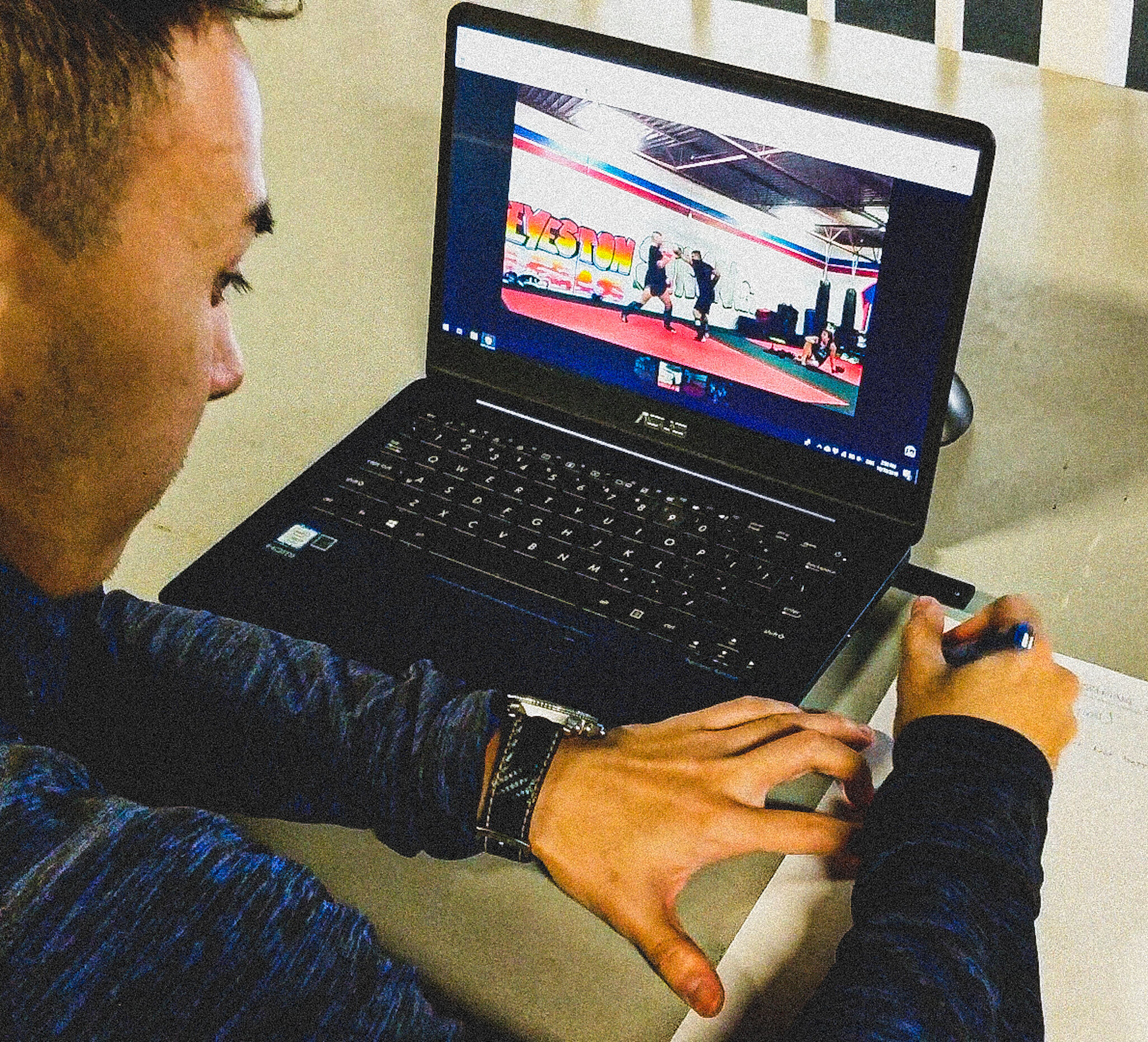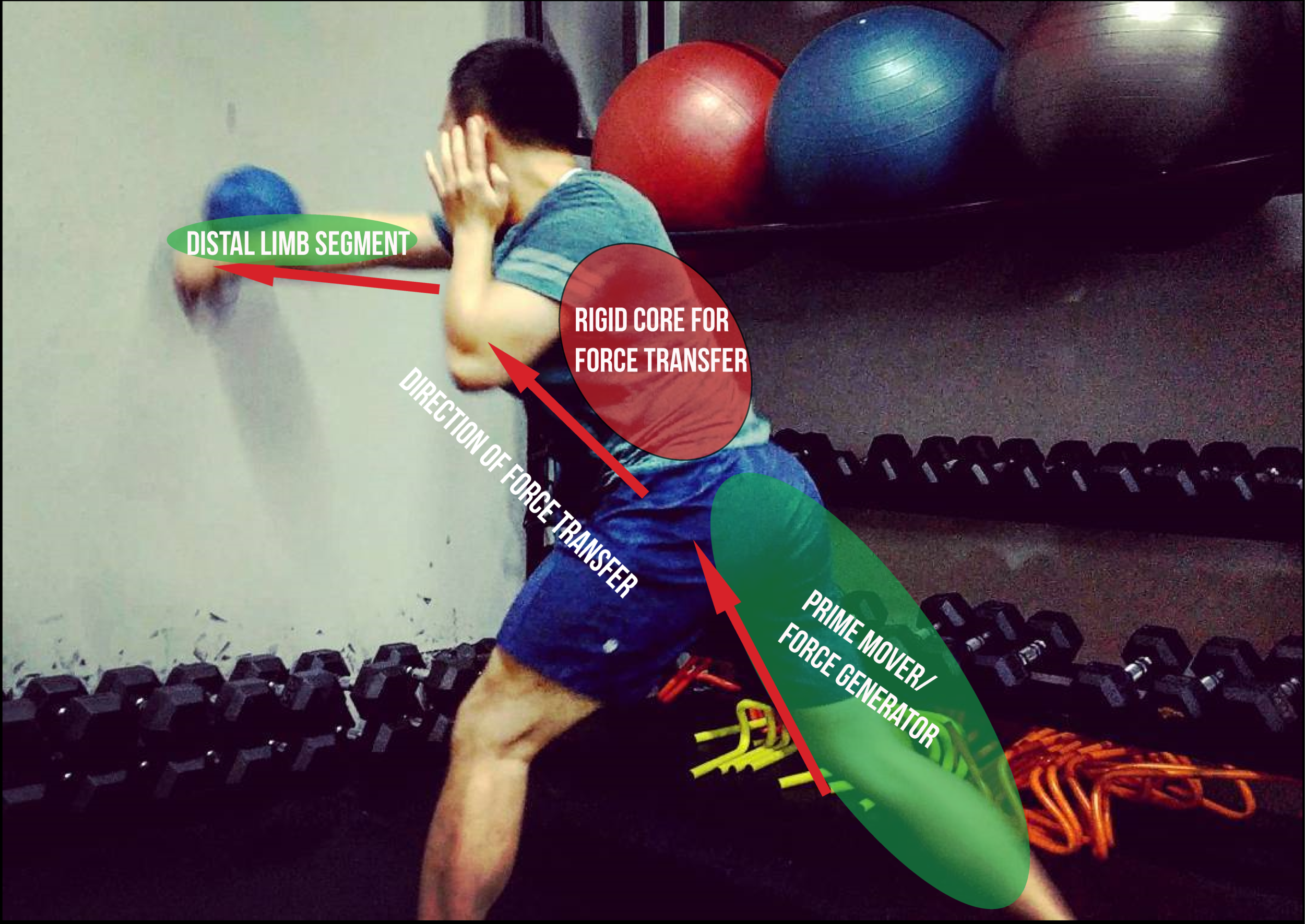Given the complexities of combat sports performance, strength and conditioning programming must match the demands of the training environment by being adaptable and holistic. In order to achieve this, programming must consider all layers and timelines of training.
Programming and training periodization happens on 4 time scales (or layers) - Within session, on the microcyclic scale, mesocyclic scale and the macrocyclic scale. Each layer can be considered the lenses of which the S&C coach views training and physical preparation and must be planned accordingly.
In this article, we’ll discuss several strategies and philosophies I use when preparing combat sport athletes, which layers they can be utilized in and how a better understanding of programming can help us more effectively coach high performance combat sport athletes.
Some of the concepts I talk about will be familiar to those who have read my eBook “The Strength & Conditioning Handbook for Combat Sports”, while others maybe new to some of you.
In part 2 (this part), we will discuss the specifics week to week and day to day programming (higher resolution view).
Read PART 1 on Macrocyclic and Mesocyclic Training Here
the microcyclic layer
Programming on the microcyclic layer is concerned with optimizing training on the weekly level. Given the amount of sessions in a combat sports athletes’ schedule, we must consolidate them by avoiding any interference effects and create systems that can manage training stressors more consistently. Here are some guiding principles and strategies that you’ll find in my S&C programs.
High/low structure
I use a high/low structure to guide the initial parts of my program planning; a system popularized by track coach Charlie Francis to categorize running intensity and it’s affect on speed adaptations.
“High” training days consists of training modalities that require a large amount of neuromuscular-activation, a large energy expenditure and/or a high cognitive load - all stimuli that require a relatively longer period of full recovery (48-72 hours). Conversely, “low” training days are less neurally, bioenergetically and mentally demanding, requiring a relatively shorter period of full recovery (~24 hours).
Adapted to the world of combat sports, all training modalities, from sparring, technique work, heavy bag training to weight room sessions can all be categorized into high and low. This allows us to visualize the training and recovery demands of sessions throughout a full week of training.
Ideally, we would schedule training so that we alternate high and low training days so that the athlete is adequately rested for the most demanding sessions, but the reality of the fight game makes this challenging in practice. Some sessions, on paper, fall in between high and low categories in terms of physiological load. Regardless, using a high/low structure is a great start to help manage training stress within a week of training.
Condensed conjugate method
First of all, the conjugate method (CM), originally created for powerlifting performance by Louie Simmons of Westside Barbell uses Max Effort (close to 1RM lifting), Dynamic Effort (low % of 1RM performed in high-velocity fashion and Repetition Effort (moderate % of 1RM performed for ~8-15 reps) all within a training week. The CM is based on a concurrent system (I discussed this in part 1, where training aims to develop several physical qualities within a shorter time frame - week and month).
The first time hearing of the condensed conjugate method (CMM) was from Phil Daru, S&C coach to several elite combat sport athletes out in Florida, USA who adapted the CM method to fit the tighter training schedule of fighters.
What is originally a 4-day split (CM) is condensed into 2 days (CMM). This is what the general structure/training split looks like within a week.
Day 1:
Lower Body Dynamic Effort
Upper Body Max Effort
Repetition Effort Focusing On Weaknesses
Day 2:
Upper Body Dynamic Effort
Lower Body Max Effort
Repetition Effort Focusing On Weaknesses
Max effort and dynamic effort training are both performed on the same day, however, to mitigate neuromuscular fatigue, they are rotated based on upper body and lower body lifts. If upper body compound lifts like heavy presses and rows are performed that day (max effort), bounds and jumps will be trained for the lower body to avoid excessive overload.
Similar to most concurrent-based training splits, a large benefit comes from the fact that movements are trained within the whole spectrum of the force-velocity curve (see figure below). Max effort training improves the body’s ability to create maximum amounts of force - grinding strength, while dynamic effort trains the body to be able to produce force at a faster rate - explosive strength/strength. Repetition effort is then used to target weak points and to create structural adaptations like muscle hypertrophy and joint robustness.
The CMM also shares some of the drawbacks of concurrent-based training set-ups. Single athletic qualities progress slower since multiple are being developed at the same time, however, this is only a minor issue considering the mixed demands of many combat sports. Certain modifications can be made to the template or perhaps block periodization can be utilized (see Part 1 of the article) if working with athletes that are clearly force-deficient or velocity-deficient (see the next section on velocity-split). Nonetheless, a pragmatic way to organize both high-velocity and slow-velocity exercises within a training week. I’ve had success implementing this type of training split in my combat sports S&C programs.
Velocity-split
Sticking with the theme of a concurrent-based system within the training week, another way to set up a microcycle is using a velocity-split. For example, in a 2-day training split, high-velocity exercises and low-velocity exercises would be trained separately.
Day 1:
Upper Body Plyometrics & Ballistics
Lower Body Plyometrics & Ballistics
Speed-Strength Exercises (Loaded throws, Olympic Lift deratives, Kettlebell swings, etc)
Day 2:
Upper Body Max Strength Lifts
Lower Body Max Strength Lifts
Repetition Effort Training (70-85% of 1RM)
Isolation Exercises
With concurrent training, we risk pulling an athlete’s physiology in opposite directions. This is avoided by grouping similar stressors together within each training day, throughout the week.
Additionally, this can be used to isolate high- or low-velocity training in order to target the weaknesses within an athlete’s force-velocity profile. Using the example split above, Day 2 would play a more important role in the training of a force-deficient athlete while Day 1 would be more effective for velocity-deficient athletes. We are still training both ends of the spectrum within a week but manipulate the training volume, and therefore emphasizing certain aspects of the training stimuli, to fit the needs of the athlete’s physical profile.
WITHIN-SESSION PROGRAMMING
When training multiple physical qualities within a workout, it is important to perform exercises in an order that optimizes training adaptations and reduces the detrimental effects of neuromuscular fatigue. An effective training session will always start with a comprehensive warm-up routine, raising overall body temperature, warming up the muscles and joints, as well as “waking up” the nervous system so the athlete is ready for the work ahead. After that, we need a set of principles to guide how we will structure our training order.
principle of fatigability
Simply put, exercises that require higher neuromuscular output and physical readiness are more susceptible to performance detriments due to fatigue. These exercises are better performed at the beginning of a training session (after warm-ups) when the athlete is fresh and has all of their physical and mental resources. Max effort, max intent modalities like intensive plyometrics, high effort compound lifts and ballistics all fall under this category.
Contrastingly, exercises that require a lesser degree of neuromuscular output like accessory lifts, isolation lifts and stability training can be trained at the end of a session with little to no detrimental effects on training adaptations. If we use this principle to guide exercise order, this is what a typical concurrent power and strength training session might look like:
The same principle can be used if we were train both martial arts and S&C within the same day. Because of the importance of skills training, I would schedule it first. Pre-fatigue can be a tool to improve skill retention and transfer, but in most cases, only hampers skill acquisition and development by making it harder for combat athletes to participate in high quality, deliberate training.
PRIORITY
Prioritization is an exception to the principle of fatigability. An athlete should first perform exercises that are most important to their primary training goal (if they one that is clear-cut). Going back to our athlete is differing athletic profiles, a force-deficient athlete should focus on high-force producing exercises first thing in each training session in order to reap in the most training benefits. Likewise, a velocity-deficient athlete should perform high-velocity exercises before slower movements (the outcome is in line with the principle of fatigability but for different reasons).
Post-activation potentiation and contrast training
Post-activation-potentiation (PAP) is a phenomenon where rate of force development (RFD)/power is increased due to previous near-maximum neuromuscular excitations. This is another exception to the principles of priority and fatigability, whereby the athlete will deliberately perform heavy compound lifts first even if RFD/power is the primary goal.
I’ve written an article about this topic of within-session planning, covering these principles more in-depth. If you’d like to learn more, read “Exercise Order - Principles For Sequencing A Training Session”.
WRAPPING IT UP
Whenever I create an S&C program for combat sport athletes, I’m always considering all 4 layers of programming. Some of the specific methods I use like type of training-split or the type of volume/intensity undulating I use will change based on the athlete I’m working with, however, most of the governing philosophies (on the macrocyclic level - see Part 1) stay more or less the same.
It’s important for S&C coaches to adapt to information given in front of us, not be limited by scientific dogma, but at the same time, be willing to change and improve our philosophies over time. Since combat sports is a growing industry, so is S&C for combat sports. We must navigate through performance training with nuance.
The learning doesn’t stop there. Here are some combat sports S&C articles that will help you along the way.

![Combat Sports Strength and Conditioning - Microcycle & Within-Session Programming [Part 2 of Programming Layers Series]](https://images.squarespace-cdn.com/content/v1/55072bf0e4b055a8f66250e9/1605708338077-FWV40X4D3O675XD8QX5Q/Shared+from+Lightroom+mobile.jpg)





![Combat Sports Strength and Conditioning : Macrocycle & Mesocycle Planning [PART 1 of Programming Layers Series]](https://images.squarespace-cdn.com/content/v1/55072bf0e4b055a8f66250e9/1605110722911-P7CE6O4VILYCVBEJ9R58/muay-thai-jump-rope.jpg)


![[Fight Camp Conditioning Guest Post] Bridging The Gap: Conditioning For Combat Sports](https://images.squarespace-cdn.com/content/v1/55072bf0e4b055a8f66250e9/1585917228624-NZJGW93SQK2P6F890J2A/New+article+title+pic.jpg)








